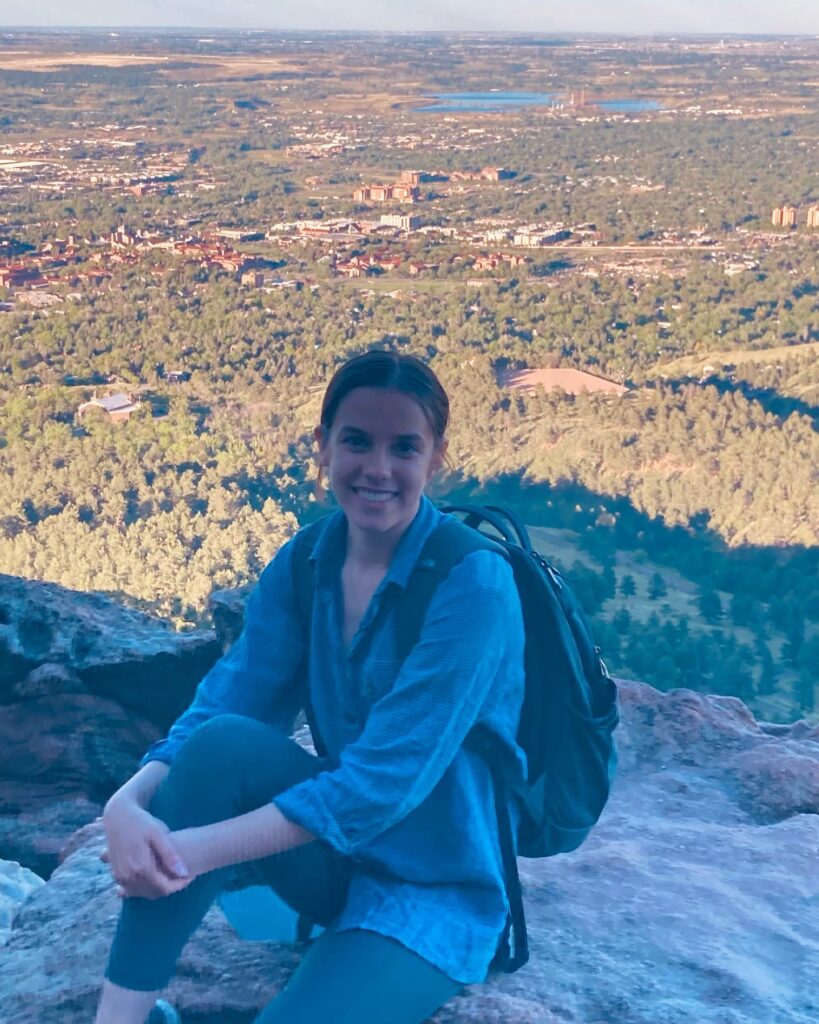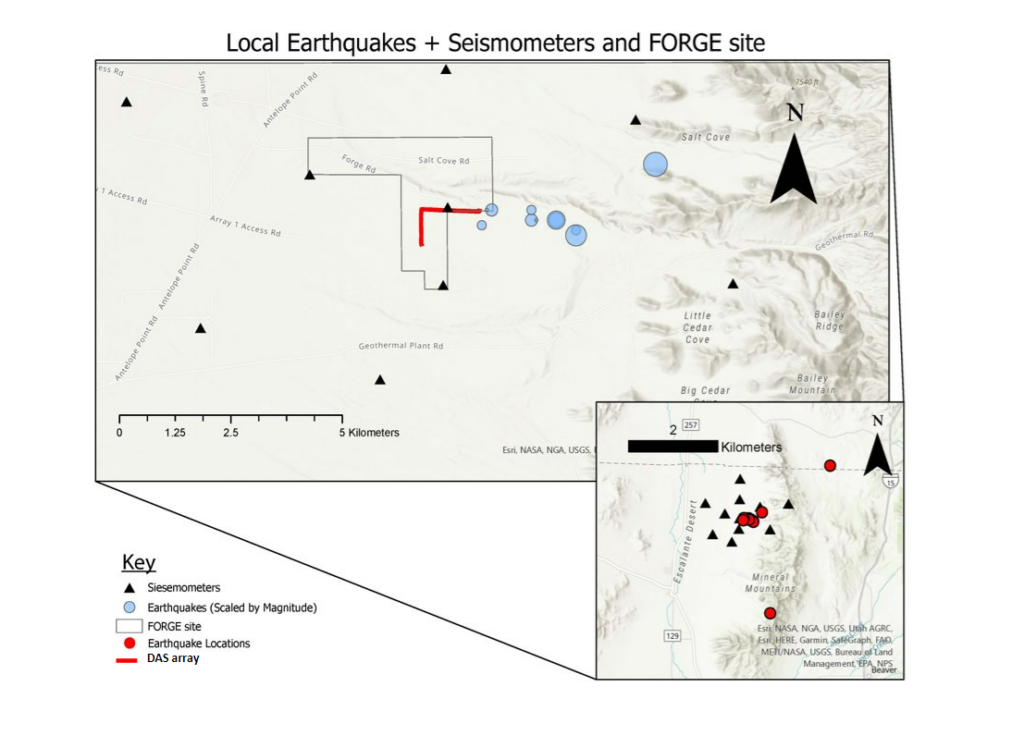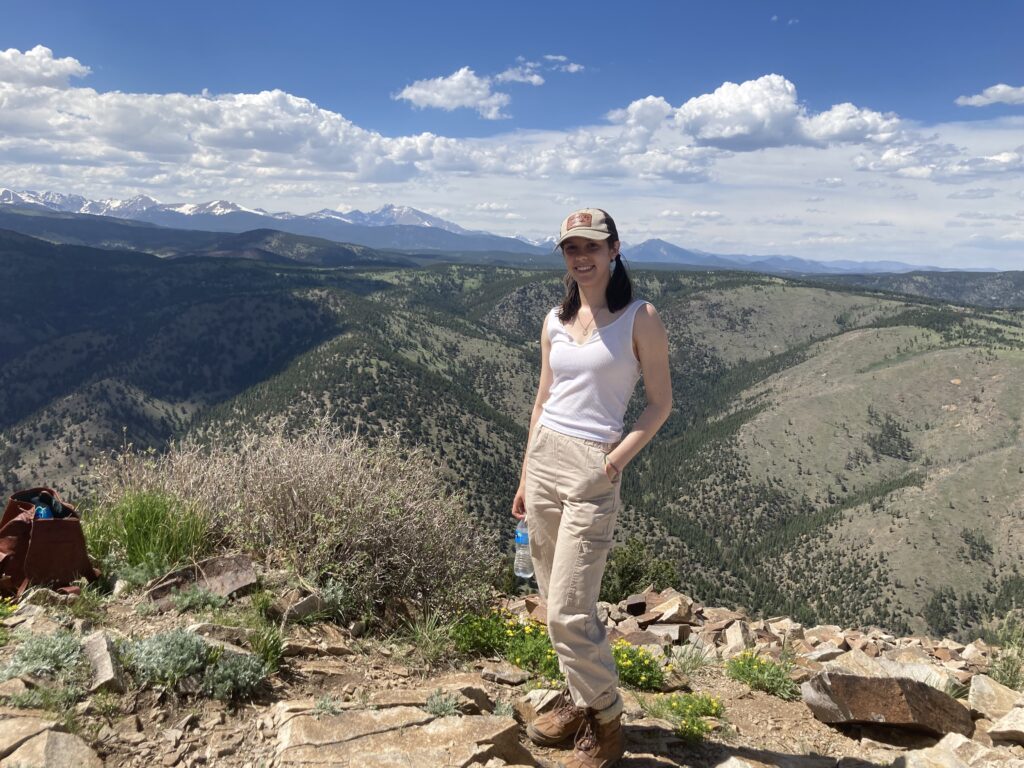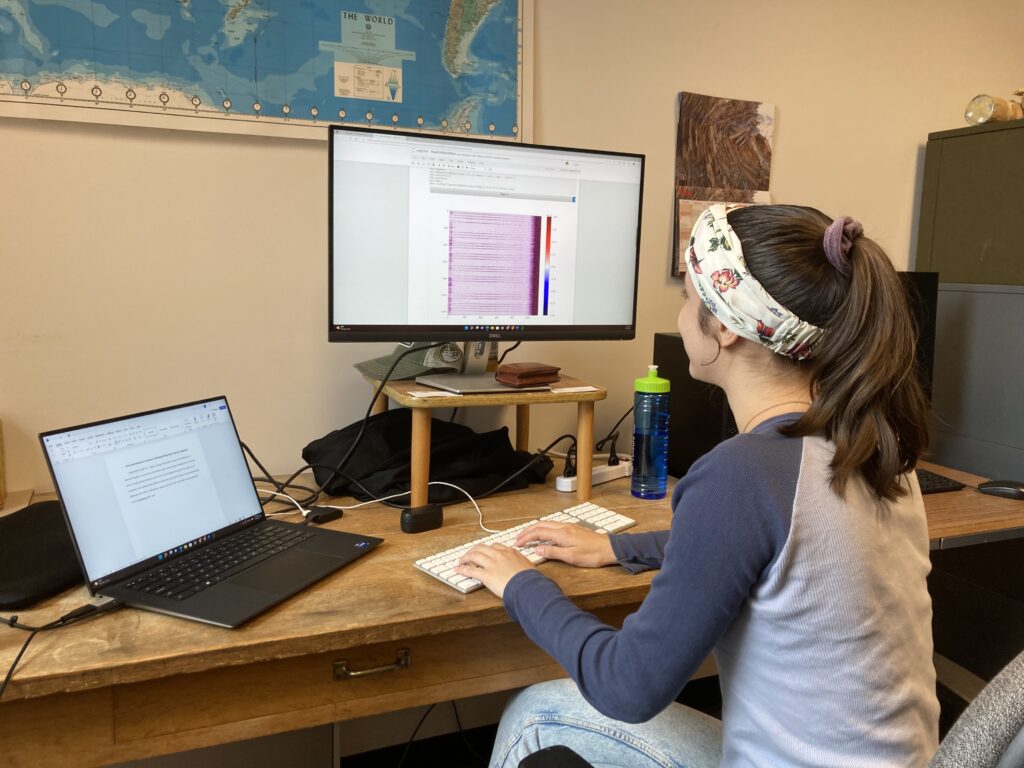



This summer we’re introducing interns in the RESESS, Geo-Launchpad, and USIP programs to shine a spotlight on the research projects they are completing throughout these 11-week internships and on their interests in geoscience.
Halina Dingo is a rising senior at Pennsylvania State University where she is majoring in geoscience with minors in English and geophysics and a certificate in GIS. Halina entered Penn State as an astronomy and astrophysics major, but realized that these sciences require extensive amounts of computer work. After researching other programs offered at Penn State, she was excited that the geoscience degree required a hands-on, six-week-long field camp in addition to other research field trips. Although Halina recognized her interest in geophysics through coursework, she wanted practical research experience. She completed an independent research project at Penn State that investigated post-seismic deformation following the 2011 Tōhoku earthquake using GPS data to create plate motion vector maps of Japan. Her advisor sent her an email about the RESESS program and Halina was excited to further explore geophysics, geodesy, and GIS through research.
Post-doctoral researcher Dr. Manuel (Matt) Mendoza of Dr. Anne Sheehan’s laboratory group at the University of Colorado, Boulder is serving as Halina’s mentor this summer. Halina is researching distributed acoustic sensing (DAS), a new seismic sensing technology that measures the strain on a fiber optic cable, revealing information about compression and extension in the subsurface. DAS functions with a receiver that fires a laser down a fiber optic cable. The fiber optic cable, which is glass, has natural impurities. The signal from the laser bounces off of these impurities and back to the receiver, which measures the wave properties of the signal and the distance the signal traveled. Wave properties and distance will change based upon the strain on the wire, which will vary due to compression or extension caused by seismic waves. Thus the strain on the fiber optic cable can be obtained and act as a seismic sensor. DAS cables can extend miles, providing continuous seismic data along the cable and enhancing the seismic network.
In April, Dr. Mendoza installed an array of distributed acoustic sensing sensors at FORGE, an experimental enhanced geothermal facility in Utah sponsored by the Department of Energy, to detect microseismicity induced by facility operations. In an enhanced geothermal system, water is pumped into hot, dry rock to create or enhance an existing fracturing network within the rock. The water is heated by the rock, pumped back to the surface, and the steam generated is harnessed for geothermal energy. When the water is pumped into the rock, the creation of fractures produces microseismicity. Halina is also investigating the signals from a vibroseis seismic survey to image the subsurface of FORGE and gain information about the progression of the existing fracture network to inform the DAS survey in the same location.
DAS has exciting potential for seismic sensing because it could enhance the seismic network at a relatively low cost, tie into existing systems, and withstand harsh conditions. In addition to being cost-effective, only the receiver needs to be heavily protected for DAS. The fiber optic cable can be encased and buried, or installed in wells used for fracking or oil and gas monitoring. DAS could also tie into the existing telecommunications systems that span the ocean floor, providing a significantly enhanced seismic network of the ocean floor. Because it can withstand tough conditions, DAS could also be used for glacial seismology or exoplanetary missions in the future.
Q&A:
- What has been your favorite part of the RESESS program so far?
Just the amount I feel like I’m growing and learning during the program. I’ve learned so many different skills. I’ve learned a bunch about seismology. I didn’t really have any seismology classes beforehand. I knew about earthquake processes, but I didn’t have seismology-focused classes. My mentor has been good about doing a seismology workshop every week and teaching us some seismology concepts, which I find really interesting. I’m super glad that I’m involved in that. I’ve learned Python, as well. I took a LinkedIn Learning Python course, so I’m learning how to code, which is great and something that I didn’t feel like I could do before this internship. It’s not only expanding my knowledge, but it’s also expanding my confidence in myself as a researcher because I’m realizing I can do these things and that they’re valuable. And that I’m a valuable asset to the field.
- What have you gained from your mentorship with Dr. Mendoza?
That’s a hard question. I am really, really glad that I learned coding skills. I think that’s going to be really useful for me in the future. But Matt has also been good about honing my presentation skills, as well. Every week he gives me a paper to read and then at the end of the week on Friday, I present that paper to him—[I] explain it and he can make sure that I understand all the concepts. It gives me a chance to practice my presentation skills as well. Sometimes it’ll just be a paper, but last week I presented a mini, 15-minute project overview and update, so I can use that as a model for my lightning talk, which is a deliverable at the end of this [internship].
- Have you learned about any new topics/research techniques that have really piqued your interest?
Everything about distributed acoustic sensing! I am really excited about and interested in it. It’s making me think about how I can connect my previous research to DAS, looking at [the post-seismic] deformation of Japan. I know that Japan is kind of on the frontier of DAS and has one of the first ocean-bottom seismic networks from telecommunications fibers deployed, so I was thinking, “Can I incorporate that into my research?” I know there are people working on DAS at Penn State. Can I try and use that to measure deformation, which is what I was going to do for my thesis project… It’s really exciting. Also, learning about enhanced geothermal systems is really cool too, because I’ve thought about going into geothermal systems and geothermal energy before… but I really enjoy learning about it and working with it because it makes me feel like I’m doing something good for the world.
Looking forward, Halina is excited to study plate deformation about earthquakes for her senior thesis. She hopes to attend graduate school abroad, ideally studying microseismicity under volcanoes in New Zealand. This summer, Halina can’t wait to visit southern France with friends that she made as she studied geoscience abroad in Ireland this year.
Written by:
- Lucia Bellino, USIP Intern
- Posted: 18 July 2022
- Last updated: 31 July 2022
- Tags: internships, seismic


